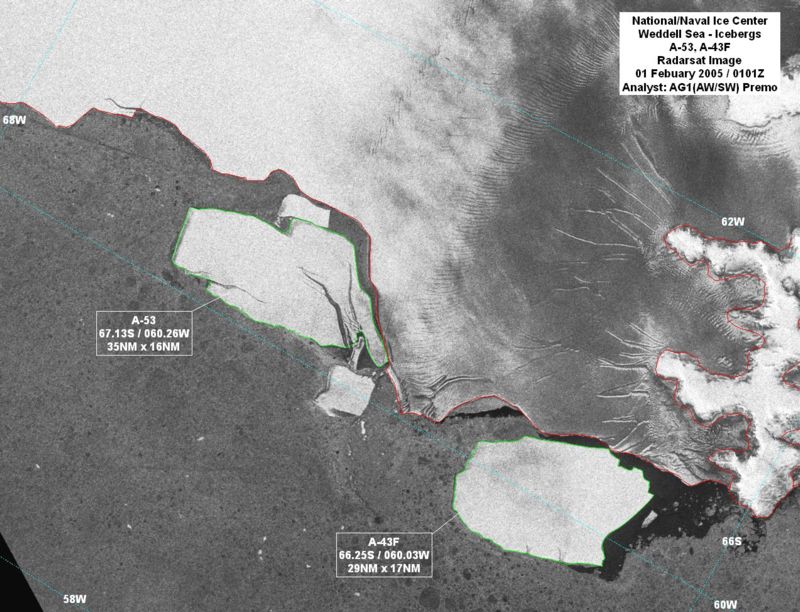New Large Iceberg Breaks off Antarctica

A new iceberg about twice the size of Dallas broke off an Antarctic ice shelf, scientists said Friday.
The event is the latest in a series of breakups of the Larsen B ice shelf, which until recent years had endured several millennia without such major change. The breakup has coincided with warmer temperatures. The new iceberg is catalogued as A-53.
The latest event is separate from one in January in which the world's largest known iceberg ran aground in the Antarctic, snuggling up to a glacier known as the Drygalski Ice Tongue.
The new iceberg is about 16 by 35 nautical miles, according to the National Ice Center in Suitland, Md., which has monitored it with satellite images from the Canadian Space Agency. It broke off on Jan. 31.
"Some icebergs of similar size that have broken off from the Larsen Ice Shelf have remained in the area for a while, while others have journeyed north," said Sean Helfrich, a NOAA meteorologist at the National Ice Center. "A-53 likely will not leave the Weddell Sea this year, and may even break off into additional icebergs sometime this year."
Iceberg names are derived from the Antarctic quadrant where they are first sighted. A-53 is the 53rd iceberg the NIC has spotted in Antarctica in quadrant A, which includes the Bellinghausen/Weddell Sea region.
Get the world’s most fascinating discoveries delivered straight to your inbox.
Robert is an independent health and science journalist and writer based in Phoenix, Arizona. He is a former editor-in-chief of Live Science with over 20 years of experience as a reporter and editor. He has worked on websites such as Space.com and Tom's Guide, and is a contributor on Medium, covering how we age and how to optimize the mind and body through time. He has a journalism degree from Humboldt State University in California.



